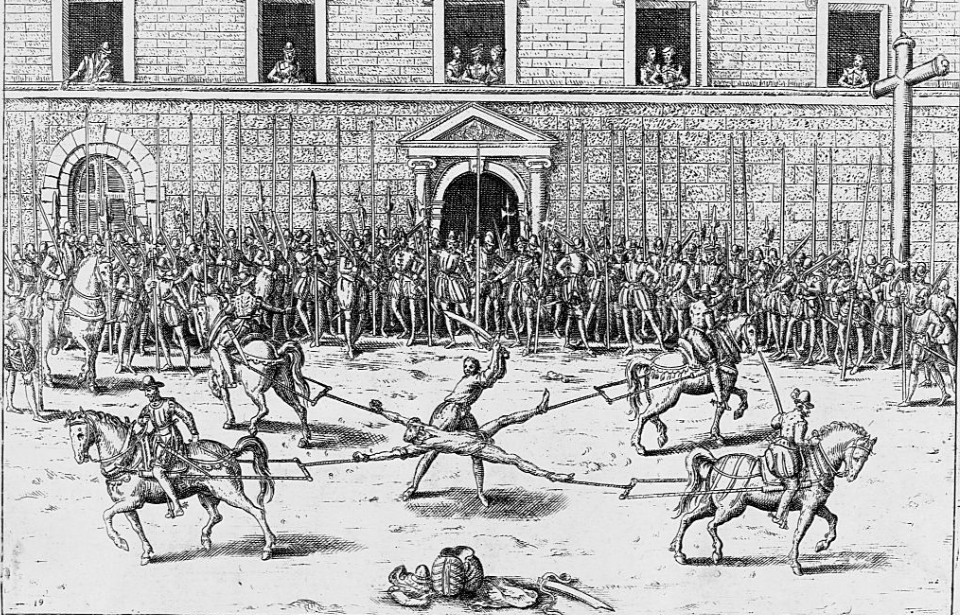There was certainly no shortage of creative punishments in the middle ages. The judas cradle made a person sit on a sharp wooden point, the pear of anguish forcibly stretched bodily orifices, and the iron maiden impaled living victims with metal spikes. One particular punishment – being hanged, drawn, and quartered – was reserved only for those accused of treason.
Hanged, drawn, and quartered
Those convicted of high treason were subject to a brutal, humiliating, and painful execution. Various sources list the order of punishment differently, but each person was subject to all three brutal stages. Hanging was not always meant to kill the accused, but rather to bring them to a point just before death when they would then be cut down. Drawing involved attaching the person to a wooden panel or frame which was tied behind a horse and dragged through the streets.
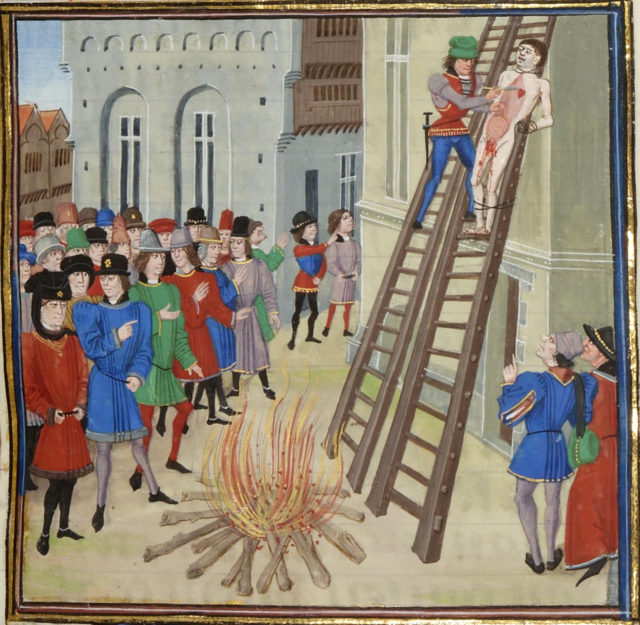
Some sources indicate that another meaning of ‘drawn’ was occasionally implemented instead of, or in addition to, being pulled by a horse. This was the removal of the individual’s intestines from their body. The accused would have their genitals removed and burned in front of them, sometimes along with their guts, before their head was finally lopped off. They would then be quartered – literally divided into four quarters.
It can always get worse
Following death, the victim’s body parts would be boiled in a vat of spiced water designed to preserve the flesh. They would then be publicly displayed as a warning to others who might think about conspiring against the crown. Although this was the standard way of being hanged, drawn, and quartered, the process could be made both better or worse for the victim. It largely depended on how the king was feeling.
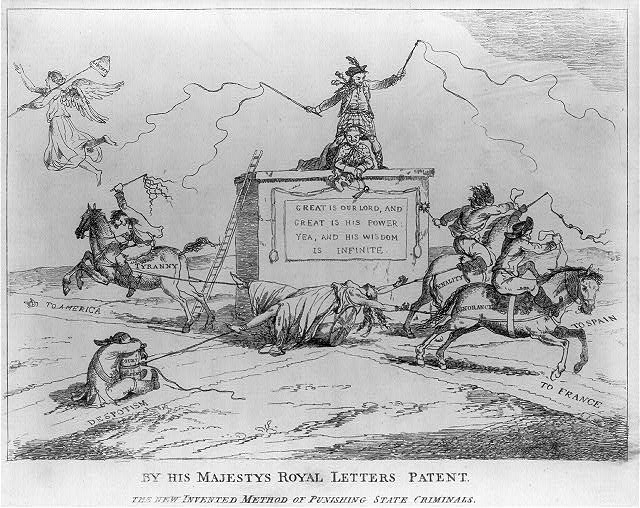
If the person was allowed to die by hanging before the other parts of the punishment were carried out, then they got off easy. If the king was feeling particularly nasty, however, he could order the quartering to happen while the accused was still alive. To do this, each of their limbs were attached to a horse by rope and the animals were made to walk away in different directions, slowly ripping the person apart.
Introduction of the punishment
Although being hanged, drawn, and quartered was popularized during the reign of King Edward III in the mid-1300s, it was also recorded as a form of punishment in earlier years. One of the first official instances was recorded by English chronicler Matthew Paris in 1238. He wrote about one of the men at arms trying to kill King Henry III, only for the monarch to enact a brutal punishment when he failed.
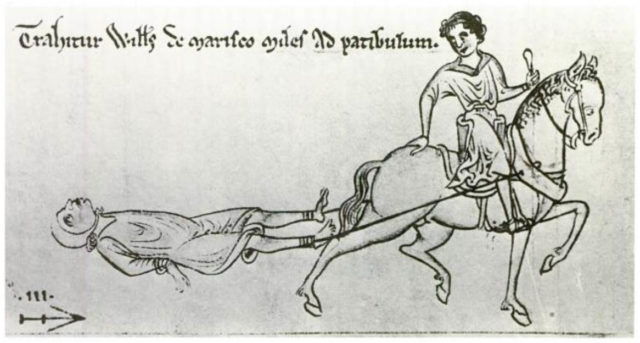
Paris wrote that he was “to be torn limb from limb by horses (…) he was dragged asunder, then beheaded, and his body divided into three parts; each part was then dragged through one of the principal cities of England, and was afterwards hung on a gibbet used for robbers.”
An ‘official’ form of execution
Although not officially written into law as a form of execution, these earlier instances of being hanged, drawn, and quartered certainly happened. The punishment really became commonplace when Edward III implemented the Treason Act 1351, which outlined the crimes that constituted treason and their repercussions. Women were to be burned on a pyre, while men were hanged, drawn, and quartered.
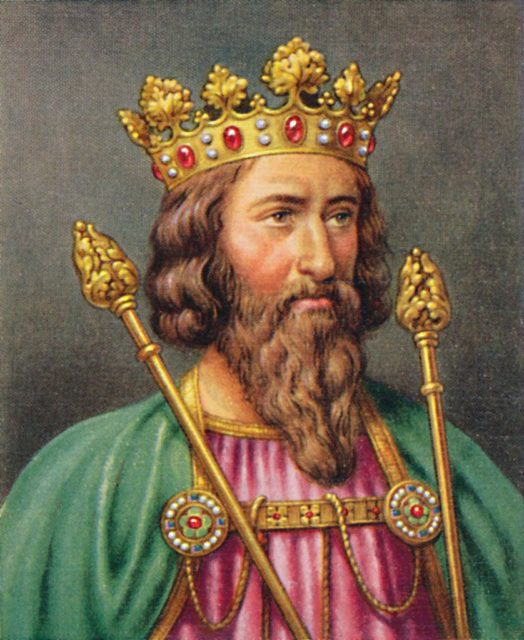
Throughout the coming centuries, the legal parameters of the punishment changed. In 1547 the Treason Act was amended so that there must be two eyewitnesses to the accused’s crimes. This rarely helped the individual, however, as once allegations were made they were generally considered guilty. It wasn’t until the Treason Act of 1695 was written that those standing trial were finally allowed to have legal representation.
William Wallace
Scottish hero, and English villain, William Wallace is certainly the most famous person to be hanged, drawn, and quartered. In true Braveheart fashion, he led Scottish rebels against English forces on numerous occasions, seeing significant success. After being betrayed to King Edward I by one of his kinsmen in 1305, he was tried and found guilty of treason despite asserting, “I can not be a traitor, for I owe [Edward I] no allegiance. He is not my Sovereign.”
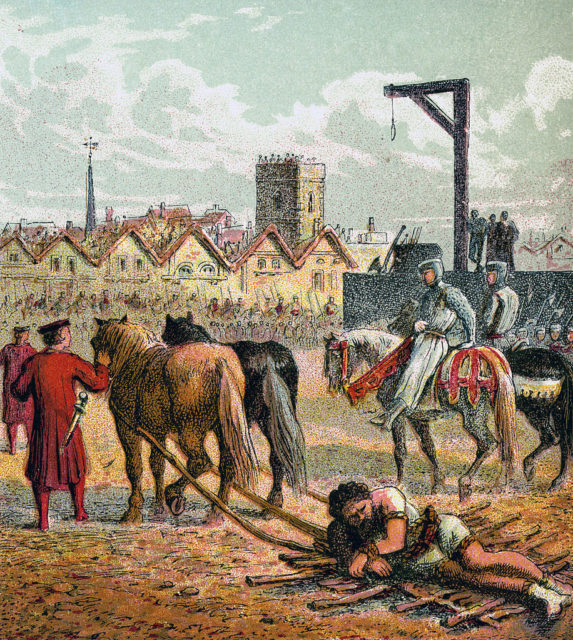
His punishment was particularly gruesome due to how much he had angered the king. He was dragged naked behind two horses for six miles through the streets of London before reaching the gallows, all the while being pelted with garbage and feces. When he arrived, he was hung with a noose, only to be cut down just before death. Finally, his genitals and intestines were removed and burned in front of him.
The final death blow was dealt when his heart was cut out, and for good measure they also took his head. Wallace was indeed quartered, with his remains being sent throughout the country to act as a warning to other rebels. His head, however, remained in the city mounted on a spike near London Bridge.
Edward Despard
While Wallace is certainly one of the best-known people to be hanged, drawn, and quartered, Edward Marcus Despard also has a notable claim. He was the last person to officially die in this manner in the UK. Serving as an officer in the British Army, Despard was appointed superintendent of the Bay of Honduras in 1783. He made himself a target of the monarchy while stationed there for advocating racial equality – an act which saw him briefly locked up in London.
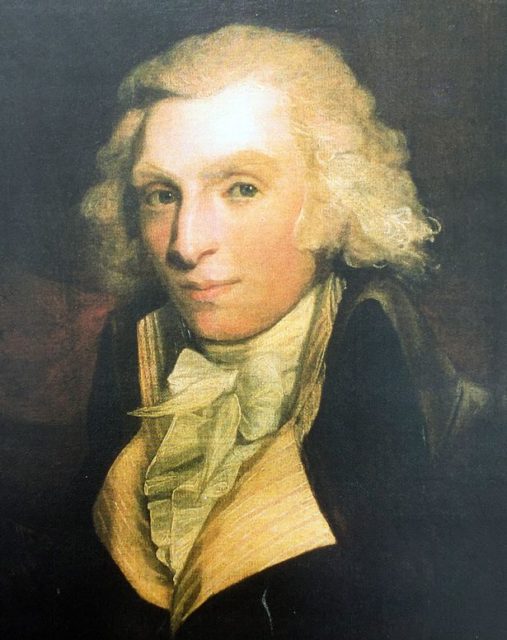
Despard later became involved in an alleged plot to assassinate King George III. Only a week before the attack, he and his comrades were arrested and put on trial. Found guilty, he was scheduled to be hanged, drawn, and quartered on February 21, 1803. His execution was momentous, drawing crowds of over 20,000 people. In fact, it was the largest public gathering to date, only surpassed by the funeral of Lord Nelson – who had actually spoken in defense of Despard during his trial.
More from us: Judas Cradle: One of the Most Painful Torture Devices in History
Although 1803 was the last time this punishment was carried out in the UK, that isn’t to say that it was completely abolished in the coming years. It wasn’t until the Forfeiture Act of 1870 that being hanged, drawn, and quartered was officially removed as a punishment for traitors to the crown.
